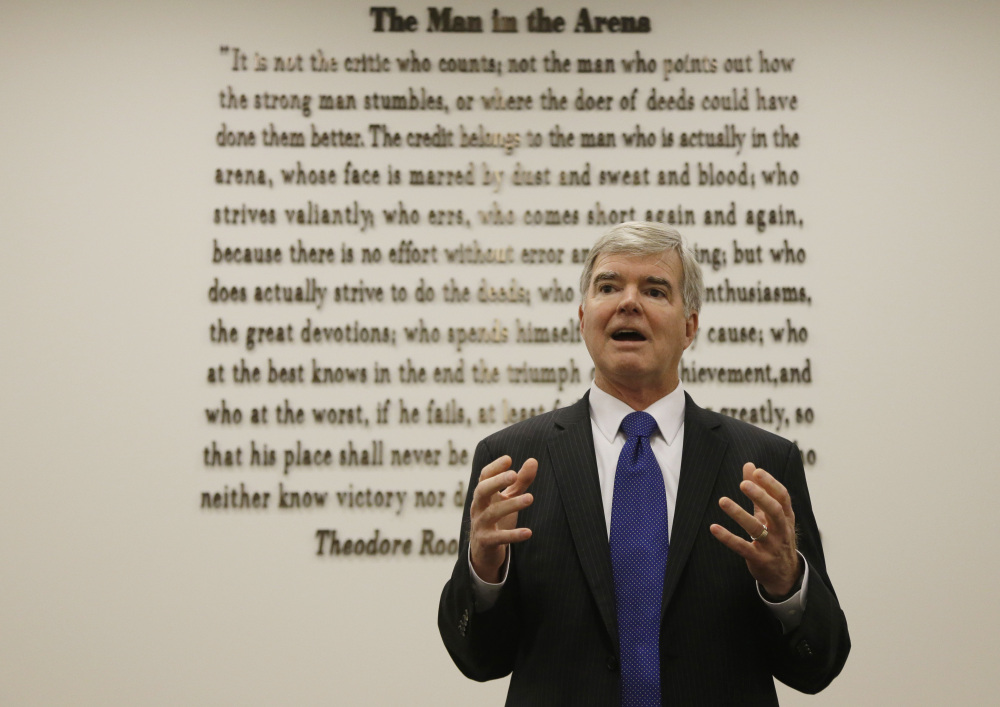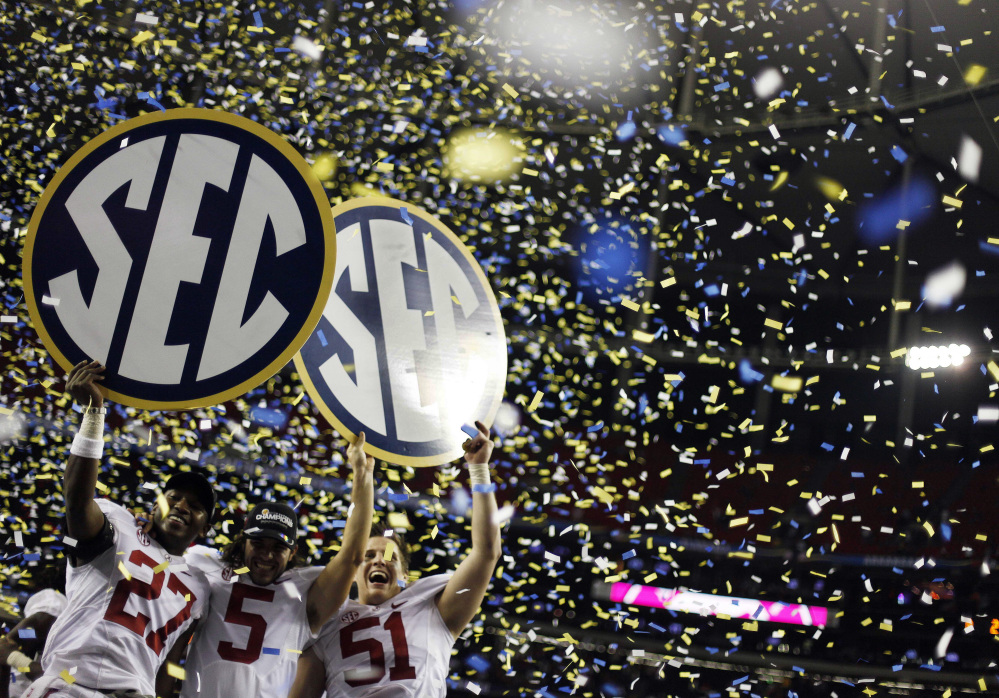INDIANAPOLIS — The biggest schools in college sports are about to get to make their own rules.
The NCAA board of directors voted 16-2 on Thursday to approve a historic package of changes that allows the five richest football conferences – the ACC, Big Ten, Big 12, Pac-12 and SEC – to change some rules that have applied to all Division I schools for years.
Representatives from those leagues representing 65 universities also will benefit from a new, weighted voting system on legislation covering the 350 schools in Division I.
The five largest leagues contend they need flexibility to solve controversies, including recruiting and health insurance, and complained the past two years that they face more scrutiny than everyone else.
If the decision survives a 60-day override period, the transition could begin in January.
“It does provide degrees of autonomy for the five high-resource conferences,” said the Wake Forest president, Nathan Hatch, the board chairman and a key architect of the plan. “This is not complete autonomy. We’re still part of Division I, but I think it allows us to provide more benefits to student-athletes.”
A handful of university presidents who spoke after the vote agreed on one thing: Paying athletes is off the table. And it’s very unlikely the five leagues will design their own policies when it comes to infractions.
But there’s a good chance the leagues will take steps to add money to scholarships or craft an athlete stipend intended to help cover the so-called full cost of attending college – costs beyond tuition, room and board, and books and supplies. That will be millions more in spending by leagues that are already partners in multimillion-dollar TV contracts to show off their football and basketball.
It is a dramatic new start for an organization that has come under increasing criticism.
Already this year the NCAA agreed to settle two lawsuits for a combined $90 million.
It awaits a judge’s decision on a federal lawsuit: Plaintiffs argued college sports’ amateurism rules are anti-competitive and allow the organization to operate as an illegal cartel.
And also pending is a decision by the National Labor Relations Board on whether Northwestern football players can form what would be the first union for college athletes.
While NCAA leaders acknowledge the system may not quash every legal case or argument, those who helped draft this proposal believe it will give prominent schools greater leeway.
Commissioners and school leaders from the power conferences have until Oct. 1 to create a wish list of areas where they want autonomy.
Any items that make the list would go through an approval process of the 65 schools.
The NCAA president, Mark Emmert, also said the board could veto an autonomous rule change if it goes too far. He described that situation as rare.
The No. 1 priority heading into October is expanding scholarships to cover up to the full cost of attendance. Legislation to give athletes an additional $2,000 to cover college expenses was approved by the board in October 2011 but overridden later after complaints from smaller schools, spurring the effort to pass the autonomy reforms.
The big question now is whether another override movement could derail the changes. If 75 of the 350 schools in Division 1 sign the override measure, the board must take a second look at the plan. If 125 schools oppose the plan, it would be suspended until the board schedules a vote to reconsider.
“I think the process has been so inclusive and thoughtful that no one will be surprised with this outcome today,” Emmert said. “That doesn’t mean everyone agrees with it. But I think as people learn more about it, come to understand it, they will be more supportive. The more you look at it the better it gets.”
The new system gives the five richest leagues nearly twice as much voting power (37.5 percent) as any other group on the new council, where most legislation will be approved or rejected.
The five other Football Bowl Subdivision leagues would account for 18.8 percent while the second-tier Football Championship Subdivision – which includes Maine – and non-football playing schools would split up another 37.5 percent. Athletes and faculty will account for the rest.
Critics worry that the impact will create an even greater split between wealthy leagues and everyone else.
“I think it’s going to be great for those five conferences and that’s about it,” said Gerald Gurney, president of The Drake Group, an NCAA watchdog. “I don’t think it’s going to be a good step for nonrevenue sports or for Title IX. We are going to get into a new phase of competition and there will be no holds barred.”
Even some of those who helped draft the legislation said they worry about the widening gap between haves and have-nots.
But they also want a chance to adopt some of the rules from the new NCAA power brokers.
“I think that’s important to examine,” said the Wright State president, David Hopkins.
Send questions/comments to the editors.




Success. Please wait for the page to reload. If the page does not reload within 5 seconds, please refresh the page.
Enter your email and password to access comments.
Hi, to comment on stories you must . This profile is in addition to your subscription and website login.
Already have a commenting profile? .
Invalid username/password.
Please check your email to confirm and complete your registration.
Only subscribers are eligible to post comments. Please subscribe or login first for digital access. Here’s why.
Use the form below to reset your password. When you've submitted your account email, we will send an email with a reset code.